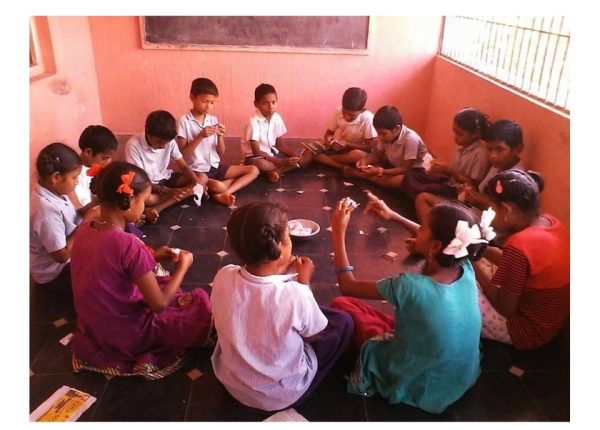The Brainery as Resource
Eighteen months ago, on World Heutagogy Day 2022, Vijaya Bhanu Kote launched her heutagogy Primary School the Heutagogy Brainery. This was 100 years after AS Neill launched his Summerhill school and, personally I think of Vijaya as a digitally-enabled 21st Century AS Neill. Not because she was inspired by Summerhill but, rather like Neill in A Dominies Log, she was informed by watching how her children learnt. Unlike Neill in his small quiet village in Scotland she found resources about Heutagogy and learning agency on the Web and, believing she had permission to develop a learner-centred approach to learning, she began developing her version of Heutagogy in her school, which ultimately culminated in the Brainery.
In recent discussions with Vijaya, her Heutagogs and their heutagogic parents I realised that another lens with which to view the Brainery by was our earlier Community Development Model of Learning. From research into existing digital community learning centres in 2002, we had discovered that effective community learning centres (in England) both evolved and improved in tandem with the human communities that they served. John Cook, who carried out this research, called this the lifecycles model of the learning centre, and he argued for a dynamic, responsive learning institution not a static, rigid, one trapped in the pedagogy of content-delivery.
This community-centred curriculum is another way of describing a human-centred approach to learning; arguably an Andragogy approach in that it comes out of negotiations with a community of people active in the learning centres activities. These are not only about learning but also represent a value, or need, of the community that the centre serves, in some specific way. John Cook described this as the hook; the attractor that made the centre inviting to the community that it was a part of. The attractor is a value in itself; it might be a creche, it might be a football team. The attractor then also shaped the evolution and development of the centre which would evolve in line with the interests of those people who attended and shaped the purpose of the centre and thereby its lifecycle.
Learning Architecture of Participation (AoP); to Nigel Ecclesfield and I this lifecycle model represents a learning AoP in which those attending and taking part in the learning offer are actually the subjects of the learning process, not the objects by which the institution measures and manages its performance. So the curriculum, or what people choose to learn in such a centre, evolves dynamically depending upon who turns up. Another aspect of the lifecycle model is that, almost like medieval guilds and their apprentice model, people who go evolve from having an erratic, occasional attendance just watching from the sidelines (or browsing the centres’ activities), to being part-time learners, then to full-time learners, to part-time assistants, to full-time assistants and, in some cases, employees. We called them trusted intermediaries; because they have earned the trust of those who attend due to their involvement with centre activities. Clearly at the Brainery and in her local community in Andhara Pradesh, Vijaya is highly trusted and significantly, in return, she trusts both her heutagogs and their parents in a wonderful virtuous circle of learning…
Continue reading “The Optimism of the Heutagogs”


